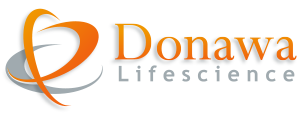MDCG issues guidance on life without Eudamed
- 5 March 2021
- Posted by: inetika
- Category: GLOBAL NEWS
The Medical Devices Coordination Group (MDCG) has published a 31-page document, MDCG 2021-1, titled ‘Guidance on harmonised administrative practices and alternative technical solutions until EUDAMED is fully functional’. Interestingly, the first page states: “The document is not a European Commission document and it cannot be regarded as reflecting the official position of the European Commission.”
According to Article 33(2) of the MDR, Eudamed will be composed of six different electronic systems (‘modules’), which facilitate the collation and processing of information under the MDR regarding the registration of relevant economic operators (actor registration), devices and systems and procedure packs (UDI), notified bodies & certificates, certain aspects of conformity assessment, clinical investigations, vigilance and market surveillance, as well as post-market surveillance.
Article 123(3)(d) MDR addresses the possibility that EUDAMED is not fully functional on the date of application of the MDR (26 May 2021). Accordingly, the obligations and requirements in the MDR that relate to EUDAMED shall apply from the date corresponding to six months after the date of publication of the notice referred to in Article 34(3) – notice of full functionality of Eudamed. Until EUDAMED is fully functional, the MDR stipulates that the corresponding provisions of Directives 90/385/EEC4 and 93/42/EEC shall continue to apply for the purpose of meeting the obligations laid down in the provisions of Article 123(3)(d) regarding the exchange of information. In addition, Article 123(3)(e) MDR clarifies that Article 29(4) MDR on the registration of devices, and Article 56(5) MDR on the registration of certificates, start to apply 24 months after the date of publication of the notice referred to in Article 34(3) MDR.
The guidance explains: “This document provides guidance to Member States and other relevant parties on the application of certain MDR provisions during the absence of EUDAMED. To that end, this guidance intends to describe harmonised administrative practices and alternative technical solutions for the exchange of information until EUDAMED becomes fully functional.”
Continuing: “The proposed practices and solutions aim to enable Member States and other relevant parties to meet their obligations under the MDR effectively while minimising any potential additional burden on the parties concerned. This guidance addresses in particular cases where the exchange of information would be difficult, or even not possible, to achieve based on the corresponding provisions of Directives 90/385/EEC and 93/42/EEC. In doing so, this guidance takes into account the decision of the Medical Device Coordination Group in its meeting of 12 March 2020 where the group agreed that the Commission makes available to Member States each EUDAMED module as soon as it is operational.”

